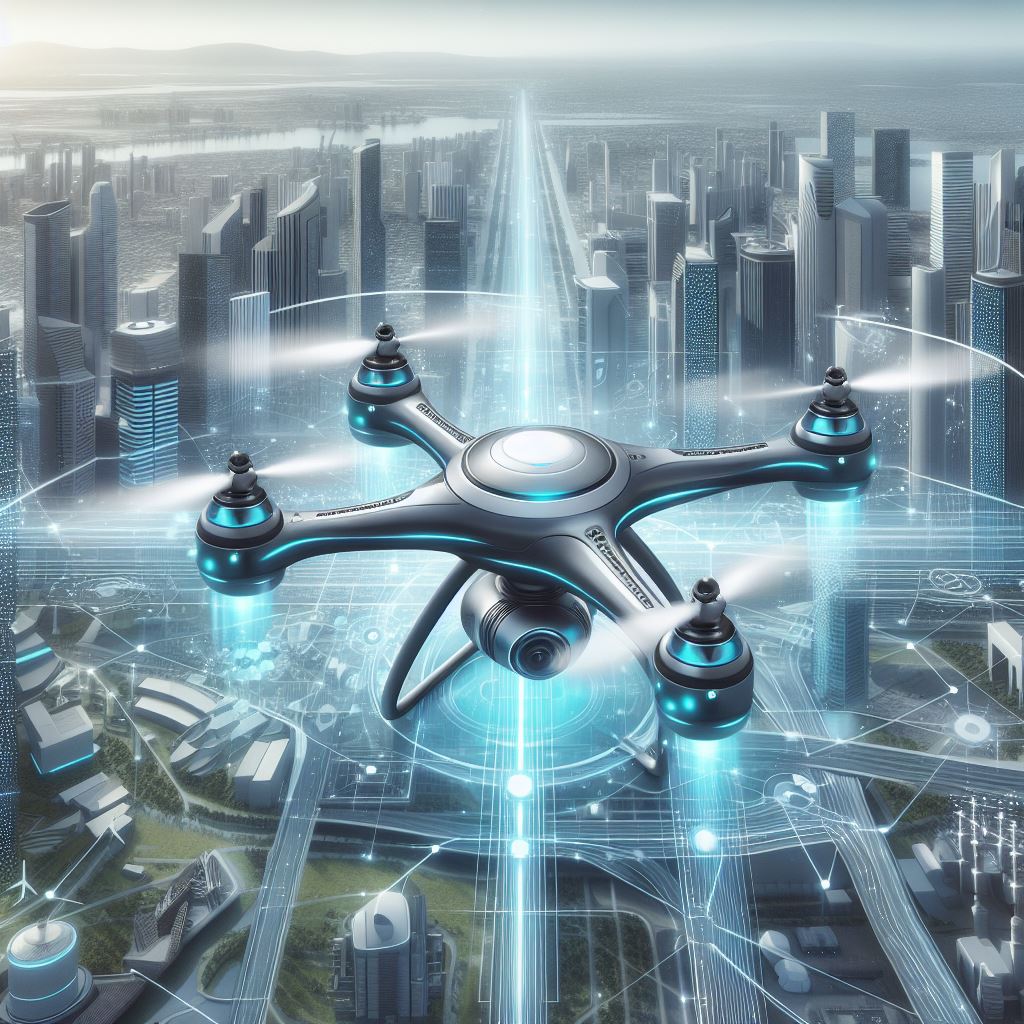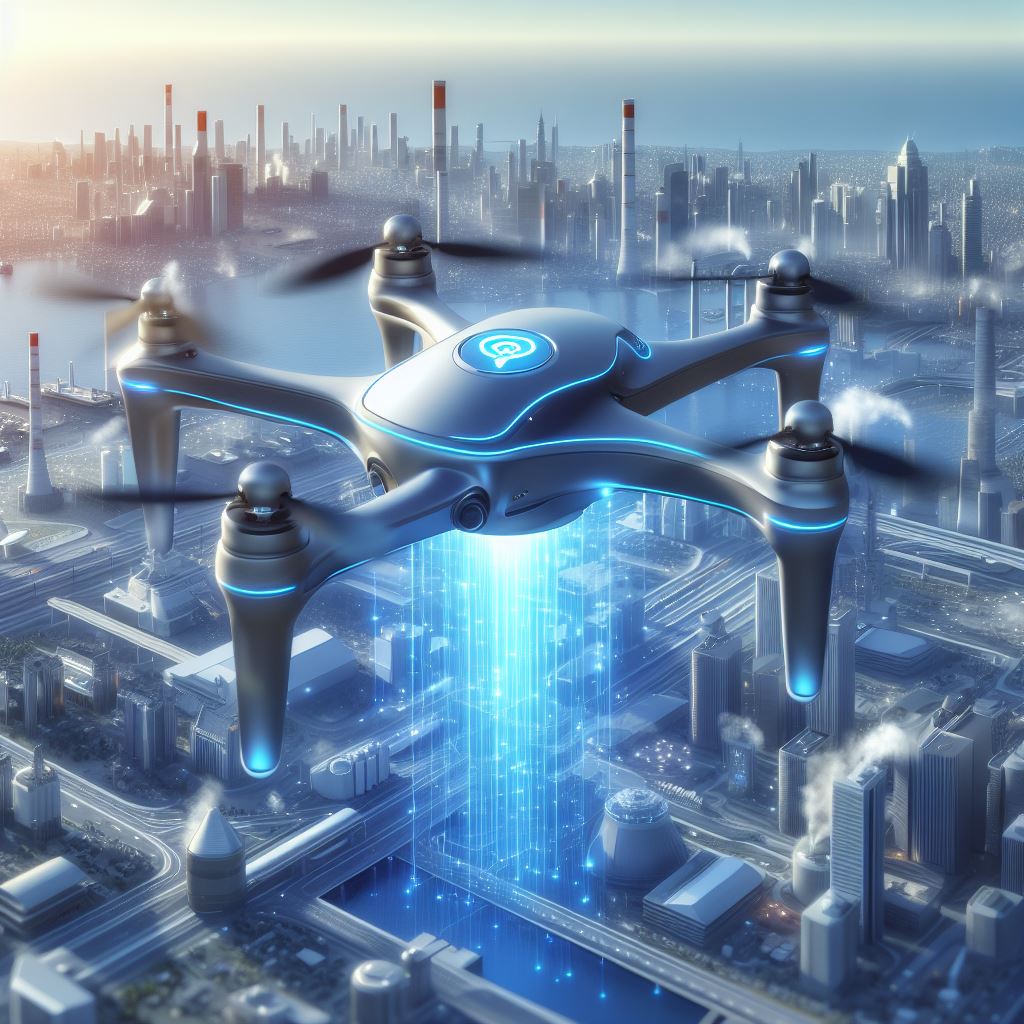
1. Introduction
The skies above us are getting an increasing number of crowded with a new breed of aircraft – Unmanned Aerial Vehicles (UAVs), greater commonly known as drones. These far off-controlled flying machines have transformed many factors of our lives, from turning delivering packages to surveying farmland. In the realm of battle, drones have become invaluable tools, imparting a safer and greater strategic way to acquire intelligence and conduct operations. However, there’s still a lot more these amazing drones can do. This is where Artificial Intelligence (AI) comes. AI refers to the improvement of clever machines able to studying and performing autonomously. Imagine a computer software which could analyze large amounts of data, resolve complex troubles, and even make selections in real-time – an ideal complement to the sophisticated technology of a conflict drone.
A. The Rise of the War Drone
Warfare has gone through a massive transformation with the introduction of UAVs. These unmanned aircraft, unlike traditional fighter jets or bombers, don’t require pilots to hazard their lives in risky fight zones. Drones can fly into areas too volatile for manned plane, letting them accumulate vital intelligence about enemy positions and movements. Additionally, some drones are equipped with weapons, permitting them to launch focused attacks with extra precision than ever before.
B. The Power of Artificial Intelligence in UAV’s
Artificial intelligence represents a great advancements in computer technology. AI algorithms can system enormous quantities of statistics from various assets, along with cameras, radar, and different sensors. This lets in them to discover patterns, expect threats, and even make decisions primarily based on pre-defined parameters. Imagine a drone prepared with AI that can autonomously track and follow a target, or one that may analyze battlefield situations and select the most secure direction for a venture.
C. A Symbiotic Relationship AI and UAVs
This blog explores the interesting and transformative ability that arises when AI and UAVs are combined. We’ll delve into how AI can increase the skills of battle drones, making them more shrewd, adaptable, and effective equipment on the battlefield. We’ll also discuss the potential challenges and moral issues surrounding the usage of AI-powered guns systems. By exploring this symbiotic relationship, we are able to advantage a deeper knowledge of the way the destiny of war might be shaped by way of this powerful technological convergence.
II. Understanding UAVs
A. Definition and Types of UAVs (Unmanned Aerial Vehicles)
UAVs, generally referred to as drones, are plane that carry out without a human pilot onboard. They are available in numerous sorts, consisting of drones, quadcopters, and fixed-wing UAVs. Drones are versatile and equipped with a couple of rotors for balance and maneuverability. Quadcopters, instead, are famous for his or her precision and agility, even as consistent-wing UAVs resemble traditional airplanes and are appropriate for lengthy-distance flights. Understanding the awesome forms of UAVs is critical for comprehending their abilities and applications across several industries.
B. Current Applications of UAVs
UAVs have found programs throughout a huge range of industries and corporations. In agriculture, they are used for responsibilities along with crop monitoring, pest control, and precision farming. Surveillance companies utilize UAVs for border patrol, natural world tracking, and catastrophe control. Delivery services employ UAVs for efficient remaining-mile shipping, while protection businesses rely upon them for reconnaissance missions, surveillance, and goal identification. Understanding the contemporary applications of UAVs showcases their versatility and importance in diverse sectors.
III. Evolution of AI in UAVs
A. Early Integration of AI Algorithms in UAVs
In the early levels of UAV improvement, they relied broadly speaking on guide control or pre-programmed routes. However, with the combination of Artificial Intelligence (AI) algorithms, UAVs received autonomy and selection-making capabilities. AI-powered UAVs can analyze sensor information, navigate complex environments, and adapt to changing situations with out consistent human intervention. This integration marked a significant development in UAV era, enabling them to perform a huge variety of tasks more efficiently and autonomously.
B. Advancements in AI Technologies for UAVs
Over time, advancements in AI technology inclusive of laptop imaginative and prescient, device getting to know, and neural networks have in addition improved UAV competencies. Computer imaginative and prescient allows UAVs to perceive their environment, identify gadgets, and navigate autonomously. Machine gaining knowledge of algorithms enable UAVs to study from revel in, enhancing their overall performance through the years. Neural networks permit UAVs to manner huge quantities of data quickly and make actual-time selections, improving their performance and reliability. These improvements have enabled UAVs to function extra effectively in numerous environments and eventualities.
C. Case Studies Illustrating AI-Enabled UAVs
Real-world examples exhibit the effectiveness of AI-enabled UAVs in numerous applications. In agriculture, UAVs equipped with AI can analyze crop fitness, stumble on illnesses, and optimize irrigation, main to increased yields and reduced costs for farmers. In surveillance, AI-powered UAVs can detect and song transferring objects, become aware of potential threats, and assist regulation enforcement businesses in tracking public protection. These case research highlight the realistic programs and advantages of AI in enhancing UAV capabilities for diverse tasks, underscoring the importance of persevered research and development on this area.

IV. The Role of AI in Enhancing UAV Capabilities
A. Autonomous Navigation and Obstacle Avoidance
Autonomous navigation refers back to the capacity of UAVs to navigate via their surroundings with out direct human control. AI algorithms permit UAVs to analyze their environment the use of sensors consisting of cameras, LiDAR, and radar, letting them come across boundaries and plan alternative routes to avoid collisions. This capability is important for safe and green UAV operations, in particular in complex or dynamic environments.
B. Intelligent Mission Planning and Optimization
AI enables shrewd assignment planning through allowing UAVs to optimize flight paths and task assignments primarily based on various factors which includes undertaking objectives, environmental situations, and aid constraints. UAVs geared up with AI algorithms can dynamically regulate their routes and priorities in actual-time, maximizing performance and attaining most appropriate consequences. This functionality is especially precious in packages which includes surveillance, search and rescue, and transport offerings.
C. Real-time Data Analysis and Decision-making
AI enables UAVs to carry out actual-time facts analysis, extracting precious insights from sensor records accrued in the course of flight. By leveraging machine studying algorithms, UAVs can interpret and examine complicated datasets to discover styles, anomalies, and trends applicable to the mission targets. This functionality empowers UAVs to make informed choices autonomously, inclusive of adjusting flight parameters, editing mission objectives, or responding to unexpected activities in actual-time.
D. Adaptive Behavior and Learning Capabilities
AI-driven UAVs possess adaptive behavior and learning capabilities, letting them improve their overall performance over time through experience and feedback. Machine learning algorithms allow UAVs to study from past interactions and regulate their behavior accordingly, leading to continuous improvement and optimization of mission execution. This adaptive capability enables UAVs to learn from their mistakes, and refine their strategies for future missions..
E. Examples of AI-driven Features in Modern UAVs
Modern UAVs are equipped with diverse AI-pushed capabilities that enhance their competencies and functionality.
Examples consist of:
Object Tracking: AI algorithms allow UAVs to tune and follow specific objects or targets of their interests, including aircrafts, individuals, or other objects.
Terrain Mapping: UAVs prepared with AI can generate high-resolution terrain maps using data collected from onboard sensors, enabling detailed 3D modeling of the environment.
Predictive Maintenance: AI algorithms examine UAV sensor data to predict potential equipment failures or maintenance needs, allowing proactive maintenance scheduling and minimizing downtime.
These AI-driven features demonstrate the diverse ways in which AI enhances the capabilities of modern UAVs, making them more versatile, efficient, and effective in various applications.
V. Applications of AI-Enabled UAVs
A. Agriculture UAV
AI-enabled UAVs are revolutionizing agriculture by facilitating precision farming, crop tracking, and pest detection. These UAVs can examine aerial imagery and sensor information to assess crop fitness, perceive areas wanting irrigation or fertilizer, and discover signs of pest infestation. By presenting farmers with actual-time insights, AI-enabled UAVs assist optimize agricultural practices, increase crop yields, and reduce useful resource usage.
B. Surveillance and Security
In the realm of surveillance and protection, AI-enabled UAVs play a vital position in border patrol, law enforcement, and catastrophe response. Equipped with AI algorithms, these UAVs can behavior aerial surveillance, screen touchy regions, and become aware of capacity threats or risks. They decorate situational awareness, aid in search and rescue operations, and aid law enforcement corporations in preserving public protection and protection.
C. Delivery and Logistics
AI-enabled UAVs are transforming shipping and logistics operations by enabling remaining-mile delivery, inventory control, and supply chain optimization. These UAVs can autonomously navigate urban environments, deliver programs to faraway locations, and optimize shipping routes based totally on real-time site visitors and climate situations. By streamlining transport processes, AI-enabled UAVs decorate performance, reduce fees, and improve consumer pleasure.
D. Environmental Monitoring
AI-enabled UAVs make a contribution to environmental monitoring efforts by using facilitating natural world monitoring, pollution detection, and weather research. Equipped with AI-powered sensors, these UAVs can survey massive areas of land, screen wildlife populations, and discover modifications in environmental situations. They provide treasured information for conservation efforts, pollution mitigation, and weather exchange studies, supporting to defend ecosystems and maintain biodiversity.

VI. Challenges and Considerations UAV
A. Ethical and Privacy Concerns UAV
The integration of AI technologies with UAVs raises moral and privateness worries, specially regarding surveillance and statistics series. There are concerns approximately potential misuse of UAVs for surveillance purposes and the gathering of sensitive non-public facts. It is crucial to set up clear ethical recommendations and privateness rules to ensure accountable deployment and use of AI-enabled UAVs.
B. Regulatory Hurdles and Safety Considerations
Regulatory hurdles and safety issues pose challenges to the mixing of AI technologies with UAVs. Regulatory frameworks governing UAV operations range across jurisdictions, making it tough to navigate legal requirements and acquire necessary allows. Safety issues, inclusive of the threat of collisions with different plane or floor obstacles, require sturdy safety protocols and hazard mitigation measures.
C. Potential Biases and Limitations of AI Algorithms
AI algorithms utilized in UAV operations may additionally exhibit biases or obstacles that effect their effectiveness and reliability. Biases in information series or algorithmic selection-making can result in erroneous or unfair outcomes, mainly in programs consisting of surveillance or law enforcement. It is critical to deal with biases and obstacles thru rigorous testing, validation, and algorithmic transparency.
D. Strategies for Addressing Challenges in UAV
Addressing the challenges associated with AI-enabled UAVs calls for a multifaceted approach. Strategies might also consist of developing moral tips and privacy guidelines, collaborating with regulatory government to streamline approval approaches, improving algorithmic transparency and responsibility, and investing in research and improvement to enhance AI skills and mitigate biases.
VII. Future Directions and Opportunities
A. Emerging Trends in AI Research
Emerging developments in AI studies, together with advancements in deep getting to know, reinforcement studying, and self sufficient systems, keep promising implications for UAV era. These improvements allow UAVs to perform greater complicated tasks autonomously, adapt to dynamic environments, and research from enjoy, starting up new opportunities for innovation and alertness.
B. Potential Disruptive Impacts
AI-enabled UAVs have the capability to disrupt industries and society by way of reworking existing commercial enterprise models, developing new possibilities, and addressing societal demanding situations. They might also revolutionize sectors such as transportation, agriculture, and environmental monitoring, leading to extended efficiency, productivity, and sustainability.
C. Opportunities for Innovation and Collaboration
Opportunities abound for innovation and collaboration within the development of AI-driven UAV answers. Collaborative efforts between enterprise, academia, and authorities can boost up technological improvements, drive innovation, and cope with demanding situations collaboratively. By fostering a collaborative atmosphere, stakeholders can liberate the entire capability of AI-enabled UAVs and create fine societal effect.
D. Speculations at the Future Evolution
Speculations at the destiny evolution of AI-UAV generation envision continued improvements in AI abilities, miniaturization of UAVs, and integration with different rising technology including 5G, IoT, and edge computing. These developments may also lead to huge adoption of AI-enabled UAVs throughout industries and packages, reshaping the manner we engage with and perceive the sector.
VIII. Conclusion
In conclusion, AI-enabled UAVs keep huge potential to revolutionize numerous industries and address societal demanding situations. However, their widespread adoption requires addressing ethical, regulatory, and technical challenges efficaciously. By leveraging rising tendencies, fostering collaboration, and embracing innovation, stakeholders can harness the transformative energy of AI-enabled UAVs to create a higher destiny for humanity.


One Response
nice